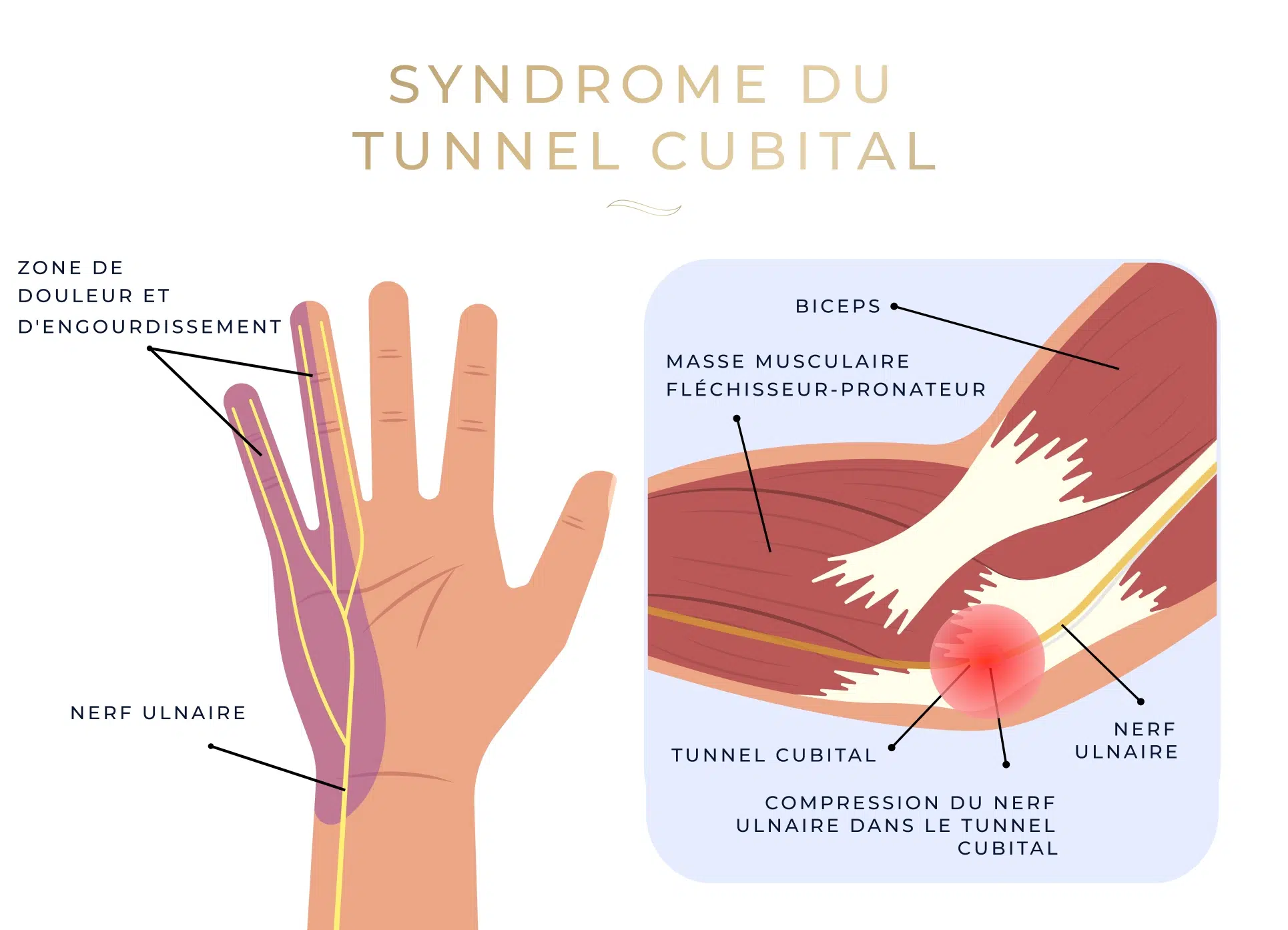Ulnar nerve surgery aims to free this compressed nerve on the inside of the elbow. The ulnar nerve runs in a groove between the olecranon and medial epicondyle of the elbow, where it is sometimes compressed. It may also be unstable and irritated by repetitive flexion-extension movements of the elbow. The aim of surgery is to free the nerve, and very often to transpose it in front of the epicondyle for optimal functional recovery. Sometimes, the ulnar nerve may be compressed in the wrist (by a cyst, for example).
Leman hand clinic
Cubital tunnel surgery
Cubital (or ulnar) nerve surgery is a delicate procedure designed to relieve compression of the cubital nerve at the elbow. This condition, which can cause pain and numbness, sometimes requires surgery to improve patients’ quality of life.

What is cubital tunnel surgery ?
When is cubital tunnel surgery necessary ?
The decision to undergo ulnar nerve surgery depends on a number of factors. When conservative treatments such as splints, occupational therapy and rest are not sufficient to relieve symptoms, surgery is considered. Patients suffering from ulnar nerve compression often experience persistent elbow pain, tingling in the fingers (ring and little fingers), numbness and muscle weakness that affects everyday life. Surgery is also recommended when compression is severe and there is a risk of permanent nerve damage.
How to prepare before the surgery ?
A consultation with your hand surgeon enables a diagnosis to be made and any additional tests required to be prescribed. A clinical examination and electromyogram (nerve conduction study) are generally sufficient, but may be supplemented by X-rays, ultrasound or MRI of the elbow (or wrist).
Specific instructions concerning fasting and medications to be avoided prior to surgery are provided to reduce the risks associated with this type of procedure.
What is the procedure for ulnar nerve transposition ?
Ulnar nerve transposition is performed by Dr. Mirsada Bejic, under locoregional anesthesia of the upper limb (more rarely under general anesthesia). The operation begins by opening the arch under which the nerve passes at the elbow. If compression is localized and the nerve is stable, this release may suffice to resolve symptoms. However, if the nerve is unstable, an anterior transposition (displacement of the nerve in front of the epicondyle) is performed to avoid irritation. This procedure, designed to move the nerve to a less compressive position, reduces tension on the nerve and promotes healing. The operation is generally carried out in hospital, with post-operative monitoring.
What are the risks of the surgery ?
As with any surgery, ulnar nerve surgery can lead to complications. Risks include postoperative infection, hematoma, nerve irritation or damage (ulnar nerve or superficial skin branch), and persistent pain. Algodystrophy is possible after any surgery. Recurrences, although infrequent, are still possible.
Cubital tunnel decompression : the recovery process
Recovery from cubital nerve surgery is usually good, but varies from individual to individual. In cases of ulnar nerve transposition, the occupational therapist uses a semi-flexion splint for 15 days. Occupational therapy rehabilitation is recommended to optimize recovery and avoid elbow stiffness, and includes scar treatment (massage, ultrasound) to avoid adhesions.
Pain and sensory disturbances often diminish rapidly, especially in early cases. We strongly recommend that you follow your surgeon’s advice for optimal healing.
What is the outcome after a cubital tunnel decompression ?
The results expected after treatment of ulnar nerve compression at the elbow are often very positive, with rapid disappearance of pain and sensory disturbance in early cases. For patients with nerve damage, nerve recovery can take up to 6 months or more, at a rate of 1 mm per day. In cases of prolonged nerve compression and extensive damage, full strength recovery is often not achieved. Significant improvement in sensitivity and strength is expected, but follow-up and rehabilitation are essential to optimize results.
For questions or to schedule a consultation ,do not hesitate to contact Dr. Bejic, a surgeon specializing in hand and wrist surgery.
Useful links :